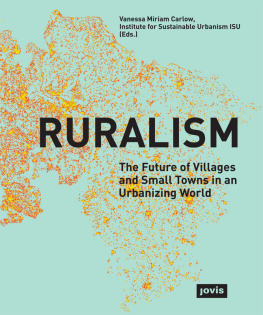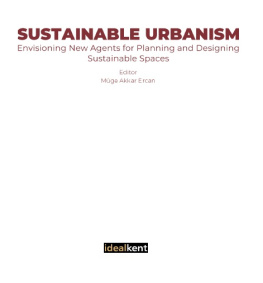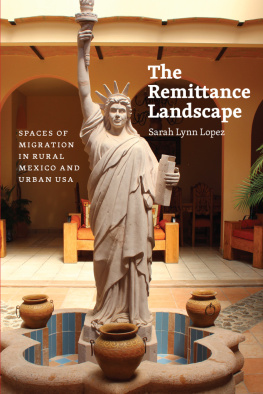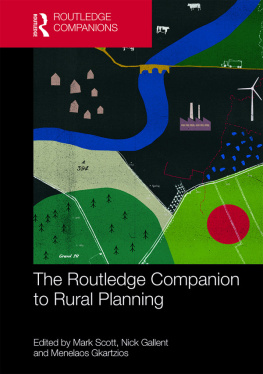RURALISM
Jovis

According to the United Nations, two-thirds of the world population will live in urban areas in the near futurethat is in cities and urban regions. How will the other third live? This question alone suggests a simplistic dichotomy between urban and rural spaces that no longer exists. Alongsidenot oppositethe transformation and drastic expansion of urban regions worldwide, rural space, too, has changed dramatically: after mechanization and industrialization, rural space has experienced mass out-migration of people. On the other hand, being a recreational landscape it temporarily receives a mass immigration of guests. Rural space has received waste and unwanted or outdated infrastructures from cities. It has served as extraction site for natural resources, creating manmade landscapes of an unseen scale. Rural space has seen a revolution in farming and the genetic modification of plants and animals to feed the worlds population. Its water dams, wind farms, cornfields, and solar parks are producing energy at an unprecedented scale. In light of this recent massive change, why are rural spaces often dismissed as declining or stagnating?
Throughout the last decades, the attention of architecture and planning has shifted to be more or less exclusively concerned with the city. Where villages and small towns have not been on the agenda, the city-centered discourse becomes almost a self-fulfilling prophecy with cities becoming larger and better, more interesting and beautiful, whereas villages and small towns are more or less left to their own devices. Few forward-looking strategies for developing villages and small towns existeven though there are ample methods for how to manage their shrinkage. In contrast with shrinkage, there are many rural regions, villages, and small towns, which can prosper from establishing a good working economy in a rural network.
And alongside the cities, the grand societal challenges also leave their footprint in rural areas: climate change, resource shortage, the diversification of the population, the need to be more resilient, or the question of how to organize sustainable mobility and civic participationnot least of which is the question of identity. Rural areas and their landscapes oftentimes serve as a medium of collective identity and culture for entire regionsrepresenting an image of Heimat and the longing for a wholesome world. Which strategies fit the needs of villages and small towns?
The #3 ISU Talks, held in November 2015 at TU Braunschweig, aimed at a discussion of the Future of Villages and Small Towns in an Urbanizing World. Along with the following questions, researchers from different fields including urban and landscape planning, architecture, geography, and social and cultural sciences discussed the future of rural spaces: How and with what human consequences are rural spaces being urbanized today? What are the existing and potential connections between urban and rural spaces? What new concepts for rural living are there? Do we need to formulate a (new) vision for ruralism? And what role can urban design, architecture, and planning play in preparing rural life and space for the future? Which vocabulary do architects and planners, anthropologists, and natural scientists have to describe that massive change? Which strategies are employed to guide the development in space described as rural?
This book combines different disciplinary perspectives on the rural realm.
The articles are centered around three core themes. The first chapter looks at landscape as a defining element and physical representation of the rural. Some authors argue that the rural is in fact not disappearing, but rather being absorbed to the city to form strongholds there in terms of landscape and also cultural practices related to landscapes, like urban gardening.
The second chapter discusses ruralism and concepts for rural areas in European countries and regions from Austria, Sweden, Bavaria, Lower Saxony, and the North of Germany.
The third chapter looks at urbanization processes in fast-growing countries of the Middle East and Global South, as well as China, where the rural is under heavy pressure to disappear in favor of suburban, low-density development.
Interviews round off each chapter.
A photo essay by The Pk. Odessa Co of Lower Saxony taken in five of ISUs partner municipalities provides a great introduction to this book.
A Rural State of Emergency
The urgency with which villages and small towns are searching for a liveable future in an urbanizing world was revealed during the Academy of Future Rural Spaces that the Institute for Sustainable Urbanism (ISU) launched in 2015 following an open call by our institute. With Have Space. Want Ideas? Not afraid of students ideas? we introduced ISU as a young collaborative team of architects, planners, and cultural scientists seeking to encourage our students to think boldly regarding real urban issues, and to work with actors from the urban arena. As a university institute, we want to put our expertise, as well as the creative talent and young energy of our students behind tackling real world problems! The response to our open call was massive. As a result, ISU conducted several cooperative projects with cities such as Berlin, Wolfsburg, Bremen, and Bremerhaven, but also with civic organizations and NGOs such as Gowanus by Design in Brooklyn, New York.
To our great surprise back then, numerous villages and small towns, in particular, were interested in a collaboration with us. Following the open call, we met with representatives from all of the respondents. For the villages, often the mayors themselves came, bringing along their chief planners! We realized the challenges that these rural places are facing display a broad spectrummuch like the cities: massive growth and massive shrinkage alike, the need to revitalize public spaces and vacant buildings, the conversion of brownfield sites, for example old stations or those barracks left by the allied forces, the aesthetic impact of energy production, the improvement of mobility and other regional networks, the provision of vital infrastructures such as health care, schools and kindergartens, or shops, but also how to deal with contamination or (radioactive) waste depositsall of which have in common a large interest in the sustainable development of their settlement.
With the Academy of Future Rural Spaces we brought together students and the representatives and citizens of villages and small towns in Lower Saxony to formulate ideas for their future. The assignments given by the villages themselves were met by a vigorous response from our students, triggering their creativity and design skills. Some proposals went very far in suggesting entirely new landscapes, some were very fine and sensitive in suggesting small and careful interventions. One group made an actual intervention in the village of Brome that is marked by a massive decay of historic houses in its heart. Some of the projects were warmly welcomed by our partners who saw immediate benefits for their municipalities or felt inspired. Some of the most interesting results are presented in the article Academy of Future Rural Spaces in Lower Saxony. The project was supported by the Federal Ministry of Education and Research (BMBF) and TU Braunschweigs Teach4TU program. Currently, we are exploring the possibility of realizing a few more interventions or small projects in our partner municipalities.
An Interdisciplinary Perspective on Rural Spaces
Based on the success of the Academy of Future Rural Spaces, we developed the teaching format of Data MiningData Mapping. In this interdisciplinary seminar, students from Environmental Sciences and Architecture and Sustainable Design jointly explored the possibility of eco-urban strategies in both urban and rural contexts. In the collaboration, the benefits of ecosystem servicethinking are combined with tools and strategies derived from urban design. That means that the environmental scientists share their expertise on the ecosystem services that open land can provide in relation to its connectivity, use, and design. The goal is to locate, dimension, and design open spaces with maximum benefit for communities.
Next page






